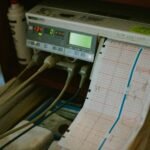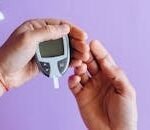Pathophysiology of Endocrine System Diseases
The endocrine system is a network of glands that produce and release hormones, which help control many important body functions. Hormones are chemical messengers that travel through the bloodstream to tissues and organs, affecting various processes such as growth, metabolism, and mood. Understanding the pathophysiology of endocrine diseases is crucial for diagnosing and managing these conditions effectively. This article will delve into the pathophysiology of diabetes, thyroid diseases, and disorders of sex hormones.
Pathophysiology of Diabetes
Type 1 Diabetes
Autoimmune Destruction of Pancreatic Beta Cells: Type 1 diabetes is an autoimmune condition where the body’s immune system attacks and destroys the insulin-producing beta cells in the pancreas. This process is mediated by T-cells and involves the production of autoantibodies against beta-cell antigens. Genetic predisposition and environmental triggers, such as viral infections, are believed to play a role in initiating this autoimmune response.
Insulin Deficiency and Hyperglycemia: The destruction of beta cells leads to a significant reduction in insulin production. Insulin is essential for glucose uptake by cells, and its deficiency results in elevated blood glucose levels (hyperglycemia). Without insulin, glucose cannot enter cells and remains in the bloodstream, leading to high blood sugar levels.
Symptoms: Common symptoms of Type 1 diabetes include excessive urination (polyuria), increased thirst (polydipsia), increased hunger (polyphagia), and unintended weight loss. These symptoms are due to the body’s attempt to eliminate excess glucose through urine and the inability of cells to utilize glucose for energy.
Complications: If left untreated, Type 1 diabetes can lead to diabetic ketoacidosis (DKA), a life-threatening condition characterized by high blood glucose levels, ketone production, and metabolic acidosis. Long-term complications include damage to the eyes (retinopathy), kidneys (nephropathy), nerves (neuropathy), and cardiovascular system. These complications arise from chronic hyperglycemia, which damages blood vessels and tissues over time.
Type 2 Diabetes
Insulin Resistance and Relative Insulin Deficiency: Type 2 diabetes is characterized by the body’s inability to use insulin effectively (insulin resistance) and a relative deficiency in insulin production. Insulin resistance occurs when cells in muscles, fat, and the liver do not respond well to insulin and cannot easily take up glucose from the blood. The pancreas compensates by producing more insulin, but over time, it cannot keep up with the demand, leading to hyperglycemia.
Role of Obesity, Genetics, and Lifestyle Factors: Obesity, particularly central obesity (excess fat around the abdomen), plays a significant role in the development of insulin resistance. Adipose tissue releases free fatty acids and inflammatory cytokines that interfere with insulin signaling. Genetic factors also contribute to the risk of developing Type 2 diabetes, as do lifestyle factors such as physical inactivity and poor diet.
Symptoms: Many individuals with Type 2 diabetes are asymptomatic in the early stages. As the disease progresses, symptoms similar to Type 1 diabetes may appear, including polyuria, polydipsia, and polyphagia. Other symptoms may include fatigue, blurred vision, and slow-healing wounds.
Complications: Long-term complications of Type 2 diabetes are similar to those of Type 1 diabetes, including retinopathy, nephropathy, neuropathy, and cardiovascular diseases such as heart attack and stroke. Additionally, individuals with Type 2 diabetes are at increased risk of developing non-alcoholic fatty liver disease (NAFLD) and certain types of cancer.
Pathophysiology of Thyroid Diseases
Hypothyroidism
Causes: Common causes of hypothyroidism include Hashimoto’s thyroiditis (an autoimmune condition), iodine deficiency, and congenital hypothyroidism. Hashimoto’s thyroiditis involves the production of autoantibodies against thyroid peroxidase (TPO) and thyroglobulin, leading to thyroid gland destruction. Iodine deficiency impairs thyroid hormone synthesis, while congenital hypothyroidism results from developmental defects in the thyroid gland.
Pathophysiology: Hypothyroidism results from reduced production of thyroid hormones (T3 and T4), leading to a slowed metabolic rate. This can be due to primary thyroid gland failure (primary hypothyroidism) or secondary to pituitary or hypothalamic dysfunction (secondary or tertiary hypothyroidism). In primary hypothyroidism, the thyroid gland itself is unable to produce sufficient hormones, while in secondary or tertiary hypothyroidism, the pituitary or hypothalamus fails to stimulate the thyroid gland adequately.
Symptoms: Symptoms of hypothyroidism include fatigue, weight gain, cold intolerance, constipation, dry skin, and bradycardia (slow heart rate). These symptoms result from the decreased metabolic rate and reduced energy production in cells.
Complications: Severe untreated hypothyroidism can lead to myxedema coma, a medical emergency characterized by hypothermia, altered mental status, and cardiovascular collapse. Other complications include cardiovascular issues such as high cholesterol and heart disease, as well as goiter (enlarged thyroid gland) due to increased TSH stimulation.
Hyperthyroidism
Causes: Hyperthyroidism can be caused by Graves’ disease (an autoimmune disorder), toxic nodular goiter, and excessive iodine intake. Graves’ disease involves the production of thyroid-stimulating immunoglobulins (TSI) that mimic TSH and stimulate the thyroid gland to produce excess hormones. Toxic nodular goiter results from autonomously functioning thyroid nodules that produce thyroid hormones independently of TSH regulation.
Pathophysiology: Hyperthyroidism is characterized by excessive production of thyroid hormones, leading to an increased metabolic rate. This can result from overactive thyroid tissue or excessive stimulation by TSH or TSI. The increased levels of T3 and T4 enhance metabolic processes, leading to symptoms of hyperthyroidism.
Symptoms: Symptoms of hyperthyroidism include weight loss, heat intolerance, increased appetite, tachycardia (rapid heart rate), anxiety, and tremors. These symptoms are due to the increased metabolic rate and heightened sympathetic nervous system activity.
Complications: If left untreated, hyperthyroidism can lead to a thyroid storm, a life-threatening condition characterized by severe hyperthyroidism, fever, tachycardia, and altered mental status. Long-term complications include osteoporosis due to increased bone resorption and cardiovascular issues such as atrial fibrillation and heart failure.
Pathophysiology of Disorders of Sex Hormones
Polycystic Ovary Syndrome (PCOS)
Pathophysiology: PCOS is characterized by hyperandrogenism (excess male hormones), insulin resistance, and ovarian dysfunction. The exact cause is unknown, but it is believed to involve genetic and environmental factors. Insulin resistance plays a key role in the pathogenesis of PCOS, as elevated insulin levels stimulate ovarian androgen production and disrupt normal follicular development.
Symptoms: Common symptoms of PCOS include irregular menstrual cycles, hirsutism (excessive hair growth), acne, and infertility. These symptoms result from the hormonal imbalances and ovarian dysfunction associated with PCOS.
Complications: Women with PCOS are at an increased risk of developing type 2 diabetes, cardiovascular diseases, and metabolic syndrome. Other complications include endometrial hyperplasia and cancer due to prolonged unopposed estrogen exposure.
Hypogonadism
Causes: Hypogonadism can be primary (due to testicular or ovarian failure) or secondary (due to pituitary or hypothalamic dysfunction). Causes include genetic disorders (e.g., Klinefelter syndrome, Turner syndrome), infections (e.g., mumps orchitis), trauma, and tumors.
Pathophysiology: Hypogonadism results in reduced production of sex hormones (testosterone in men, estrogen and progesterone in women). This can lead to delayed puberty, infertility, and other health issues. In primary hypogonadism, the gonads (testes or ovaries) fail to produce sufficient hormones, while in secondary hypogonadism, the pituitary or hypothalamus fails to stimulate the gonads adequately.
Symptoms: Symptoms in men include decreased libido, erectile dysfunction, reduced muscle mass, and gynecomastia (breast enlargement). In women, symptoms include irregular menstrual cycles, hot flashes, vaginal dryness, and decreased bone density.
Complications: Long-term complications of hypogonadism include osteoporosis due to reduced bone density, cardiovascular diseases due to altered lipid metabolism, and metabolic syndrome. In men, untreated hypogonadism can lead to infertility and decreased quality of life.
Conclusion
Understanding the pathophysiology of endocrine diseases is crucial for effective diagnosis, treatment, and management. Advances in research continue to provide new insights into these conditions, offering hope for better therapeutic strategies in the future. By comprehending the underlying mechanisms of these diseases, healthcare professionals can improve patient outcomes and quality of life.
You can read more about Endocrine system click here.
You can solve practice MCQ on above topic, click here.
For more regular updates you can visit our social media accounts,
Instagram: Follow us
Facebook: Follow us
WhatsApp: Join us
Telegram: Join us






One response to “Pathophysiology of Endocrine System Diseases”
[…] Pathophysiology of Endocrine System Diseases […]